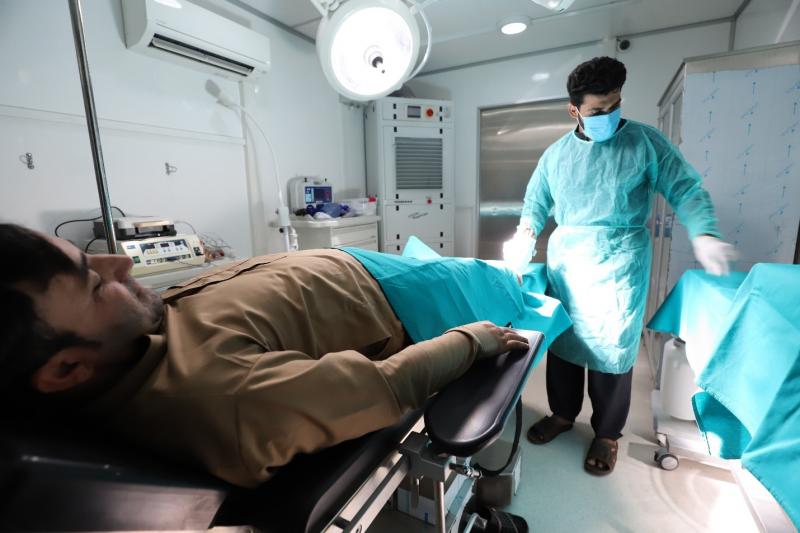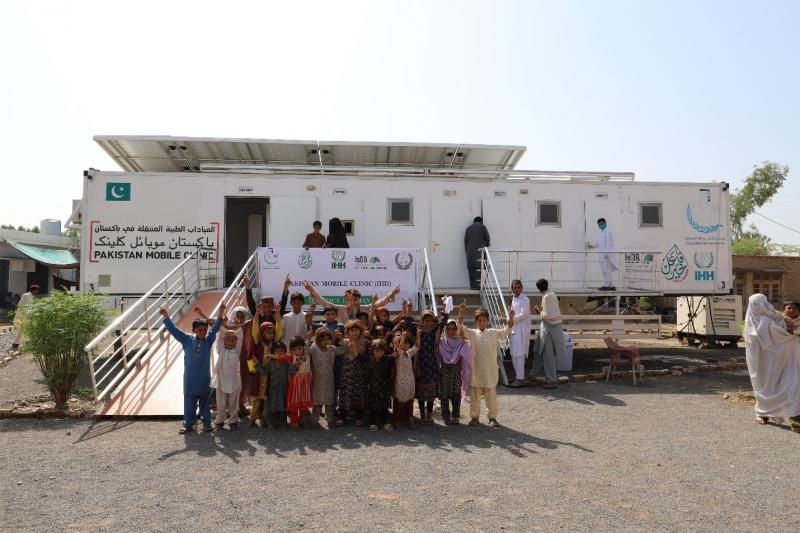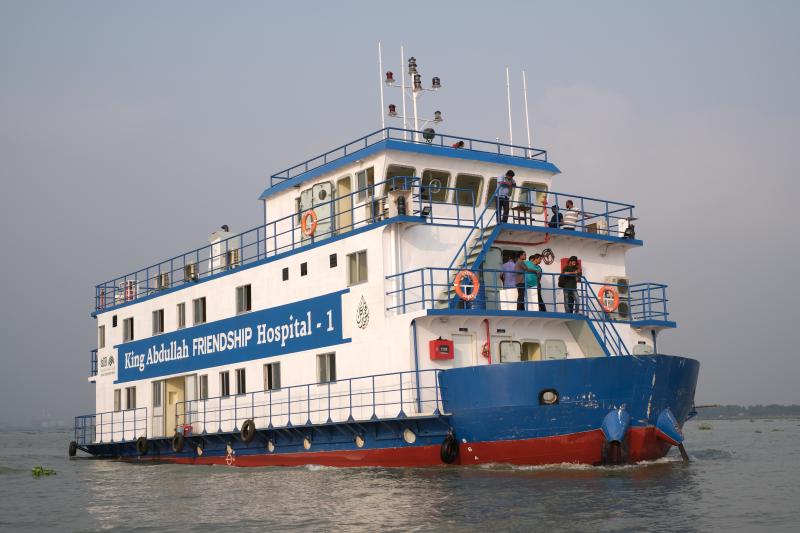6. Mobile Medical Units (MMU) in Rural Areas in Seven Countries
The total amount allocated to this project is US$242 million, to be distributed among the following countries: Yemen, India, and Pakistan (15 clinics each); Bangladesh and Afghanistan (10 clinics each); and Tajikistan and Kyrgyzstan (5 clinics each). The locations of these clinics (some of which are equipped with solar power) in rural areas lacking health facilities are decided in coordination with the respective governments and local communities.
Objectives
The aim of the project is to provide medical care in rural areas for needy people among Muslim communities in seven Asian countries, using 75 multi-purpose mobile medical units (MMUs). The MMUs provide several medical services, including primary healthcare, eye surgery, early detection of cancer, and diabetes treatment. In addition to the rapid response and emergency health services provided to the recipient communities, the project also provides training to the medical staff managing these clinics.
Beneficiaries
The MMU project targets more than 1.14 million beneficiaries annually, totalling 5.7 million patients over the five-year period in the seven recipient countries, when all units become fully operational. These services will have an evident impact on the communities, particularly in rural and remote areas, as they will directly address the lack of health services in such areas.


Expected Socioeconomic Impact
The project is expected to compensate for the lack of health services for the needy population in rural and remote areas in the seven recipient countries. It also contributes to the United Nations Sustainable Development Goals (SDGs), with emphasis on reducing communicable diseases associated with child and maternal mortalities. Nevertheless, the project is neither meant to solve all health problems facing the recipient countries, nor will it replace the medical services provided by local authorities in those countries. Rather, it will complement the health systems and serve as an enabler to achieve both the local health strategy and related SDGs.
Implementation Timeline and Progress
The project approximately takes 7 years for each country, as it involves two phases, with the first phase aiming to supply the units and the second phase to operate the units for a minimum period of five years. The supply phase, which also includes the design and manufacturing of the clinics, takes around two years. KAAP is committed to operate the units for at least five years, after which they may be handed over to the local authorities/communities.
Implementation is currently underway and varies in terms of progress from one country to the other. In some countries, such as in Pakistan, Bangladesh, Tajikistan and Kyrgyzstan, the project is making good progress, while in other countries the project is still in early stages. With the exception of India, agreements with all concerned governments have been signed. As for India, KAAP is dealing directly with local NGOs.
The government of Afghanistan prefers to establish a specialized cardiology hospital in Kabul to help the poor who cannot travel outside the country for heart disease treatment. In addition to the hospital, the government also prefers to build four comprehensive health centers in rural areas. Preparations for the project implementation are underway.
In the case of Yemen, KAAP is evaluating several options and mechanisms to resume the project, bearing in mind the current situation on the ground. The contracts for supply and operation of the MMUs have been signed for Tajikistan and Kyrgyzstan, and the units are in the production phase.
As for Pakistan, operation of the MMUs already started in August 2019 with eight MMUs, six for Primary Healthcare (PHC) services and two for Surgical Care Services (SCS). Breaking that down geographically, five MMUs (4PHC+1SCS) are operating in the Khyber Pakhtunkhwa Province and three MMUs (2PHC+1SCS) are operating in the Sindh Province. In Bangladesh, two floating MMUs are still under construction, while three floating MMUs have already been launched for testing and commissioning.

Success Stories: Kamal
Kamal Bibi (63) has been a chronic patient of hypertension and diabetes for the last 10 years. She has been taking medications and visited numerous doctors to have the disease controlled, but it only gets worse every day.
“I have been living a life of misery for several years. My diabetes level never falls to 180, and because of my hypertension, my suffering extends to my entire family.” One day, my son told me that he had heard of the Mobile Clinic project that had recently arrived in Wanda. I thought of visiting that clinic, in hope that they might treat my diseases. I was quite surprised with the way the doctor listened to me and suggested some tests. They performed the tests right there and then not only did the doctor prescribe quality medicine for me, but he also gave me a proper diet plan. It’s been 3 weeks now and I am feeling energetic after a very long time. My diabetes level is under control now, along with my hypertension problem. I am really thankful to the Mobile Clinic project and its doctors.”
Success Stories: 21 Day Old Infant
A 21-day old poor infant by the name of Amir Khan was born with an infection of skin and the underlying tissues. His infection was spreading rapidly.
“A friend told me that there is a mobile clinic providing free healthcare in Ahmad Zai, Lakki Marwat, and they even have a surgery unit as well. I decided to have my boy checked there.” said Naik Nawaz, the mother of Amir Khan. “I brought my child to the clinic site. The surgeon inspected the wound thoroughly and diagnosed the disease. He told me about the condition of my son and started on pre-operative antibiotics and analgesics. After controlling the infection, the infant was planned for local excision of the infected tissues and deep debridement and all infected skin along with subcutaneous tissues removed. Partial closure of the wound was done with absorbable sutures and he was discharged home for further follow up after 72 hours.”“After 72 hours, when they opened the bandage, the wound showed signs of healing and it was the moment of relief for us. Previously, we had spent a lot of money on my child’s treatment but all in vain. Thank you for these free advanced health facilities at our doorstep.” she said.